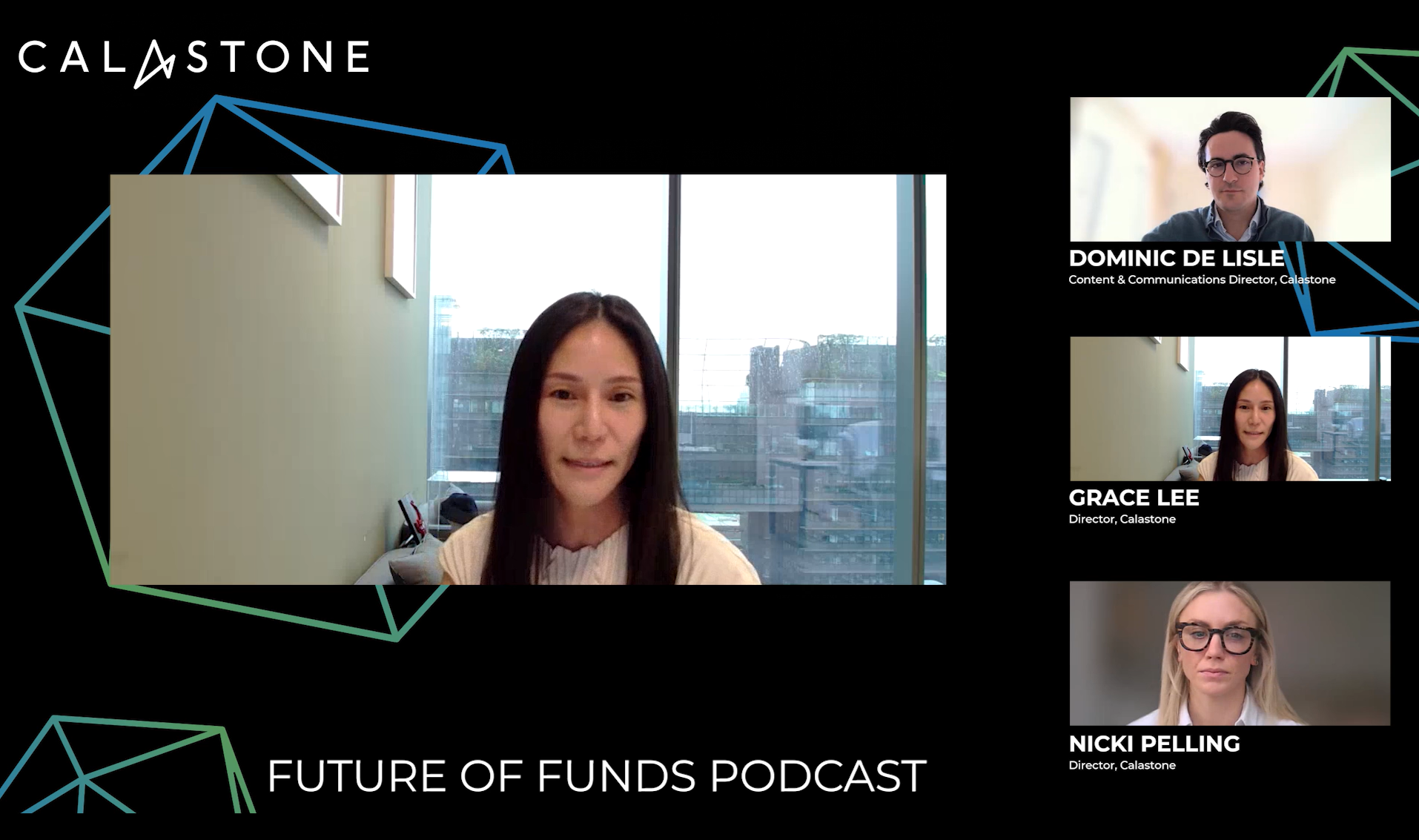

We do monthly deep dives into the fund transaction data in the UK and have identified a clear trend of accelerating inflows to index funds. Our analysis of global flows over the last two years is consistent with the patterns we have seen in the UK.
Over the last two years, index funds have made up just $1 in $5.36 of the volume of equity fund trades we process around the world. This is well below their natural share of assets under management but this is because trading is steadier, not because investors do not like them. Active funds by contrast are traded far more regularly and in greater volume reacting much more directly to global events. They accounted for 82% of the equity transactions by value across our network. Crucially, high trading volumes do not equate to popularity, but rather to much more frequent decision-making.
Index trackers are comfortably beating active funds in the race to attract new capital. Across our global network, they garnered inflows of $10.0bn in 2019 and further $13.5bn in 2020. The value of buy orders was almost two fifths higher than sells over the two-year period (FFI: Index Equity 57.8) indicating strong, consistent buying. Across every major territory and across every equity fund category, our indices of passive funds have outpaced their active equivalents in the last two years.
Active funds saw net outflows of $11.4bn in 2019 and would have shed cash again in 2020 were it not for a dramatic turnaround in the final quarter. Only by the middle of November had active equity funds finally recouped all the earlier 2020 outflows and, by the end of the year, investors added a net $6.0bn to their holdings.
The combination of lower trading volumes with steadier inflows for index trackers proves that investors are ‘buying and holding’. Index funds are now firmly cemented into savings plans, with automatic buy orders placed every month.
Some of the details vary, but trends around the world are similar
From one part of the world to another, passive funds are proving more popular. Investors in Europe and Hong Kong have withdrawn capital from active funds in each of the last two years, while adding to index trackers. Meanwhile, in the UK, investors committed a net $17.3bn to tracker funds between 2019 and 2020, while active funds shed $0.4bn. Taiwanese investors were net sellers of both active and passive funds over both years, but the outflows from active funds were fifty times larger.
Calastone Fund Flow Index of investor behaviour around the world shows preference for passive funds over time

Yet, even though the whole world is moving in the same direction, disproportionately adopting passive funds, this does not mean the value of inflows is necessarily always higher than for active funds. This depends more on the extent to which index trackers have become embedded in the local savings culture. For example, in Australia and Singapore, although index funds are scoring higher on our index, indicating steadier buying (in common with most parts of the world), the overall value of capital flowing into active funds is significantly greater. In Australia, inflows to active funds surged in 2020, totalling $3.7bn in new capital, compared to just $943m for passive funds. Over the last two years, active fund inflows in Australia have been three fifths higher than index trackers.
This is in sharp contrast to Australia’s UK, European and US peers, as well as some of its Asian neighbours and is being driven by buying of focused on domestic Australian equities and global equities. It also suggests the Australian active fund management industry may be mounting a more successful defence against the inroads being made elsewhere by index trackers.
Which equity sectors are driving the trends?

Across our network, global equity funds have proved the most popular over the last two years, consistent with a longer-term trend we have spotted in the UK. Although equity funds overall have only seen inflows of $18.1bn over the last two years, global funds have enjoyed $24.6bn of new cash, two thirds of this in 2020 alone. Unlike all our other geographical equity fund categories, active global funds have successfully fought off the competition from index trackers. Across our global network, investors have added a net $17.4bn to active global funds, two-and-a-half times more than the $7.2bn they have committed to passives. Only Europeans have favoured passive global funds. Investors have recognised the value of global diversification, freeing themselves from risks associated with single markets, such as concentration risk, where a few stocks dominate a stock market, political risks, or simply changing economic conditions, or to gain exposure to sectors not represented at home.
Index funds focused on North America have done very well too, with investors in all parts of the world adding to their holdings in 2019 and 2020, even as they sold down active North American funds. Emerging market funds have also seen inflows – investors in the UK and Australia bought active and passive emerging market funds in similar amounts, but those elsewhere focused on index funds, opting to withdraw capital from their active emerging market holdings.
The biggest negative impact has been felt in funds focused on European equities. They have borne the brunt of the selling, shedding $6.0bn over two years (four fifths of this was in 2019), with investors in every part of the world reducing their exposure to the region. Notably, all of this selling was in active European equity funds – sell orders over the last two years have been almost 1.5x greater than buys, generating an FFI: Europe Equity of just 41.9; their passive counterparts saw modest net inflows from investors everywhere, particularly in 2020. (An index reading of 50 means buys equal sells).
As with Australia, UK-focused funds have been unloved by foreign investors, especially those in the rest of Europe who have sold UK funds heavily. Brexit, the severe Covid-19 impact, and a stock market dominated by low growth value stocks that do badly when interest rates are at rock bottom, have all knocked the shine off UK assets. Even UK investors have only been interested in index trackers focused on their home market. They too have sold active funds.































